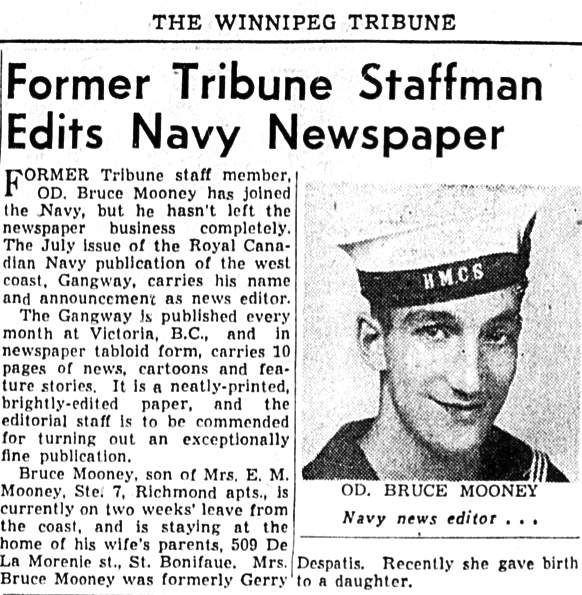A New Chapter for Canadians on Landing Crafts.
[Photo: Canadians in Combined Ops had a front row seat during the shelling of Italy]
Introduction: D-Day Italy, September 3 1943, is but two days away. Canadians sailors in the 80th Flotilla of Landing Crafts have moved their newly-repaired barges ("Don't call 'em barges," some sailors had said earlier) from Malta to locations near or at the edge of Messina, Sicily's capital city.
They were ready to start hauling Allied troops and materials of war across the seven-mile-wide strait to Reggio Calabria, located on the toe of Italy's boot. For the first time they would also be asked to carry Canadian troops in their fleet of flat-bottomed crafts (LCMs - Landing Craft, Mechanized), and they were delighted when they heard that news. They only needed to be given the signal.
Lloyd Evans of Markham, Ontario (RCNVR, Combined Operations) recalls the following about this time period:
Most days in Malta were bright and sunny and one particular day in early September of 1943 was no exception. I, and a crew of 4, found ourselves back in our landing craft on a northerly tack. We had several escort vessels and after a few hours under way all hell broke loose when about 60 enemy bombers dropped their loads all over the place. They were flying low enough for us to clearly see their bomb doors opening and their bombs being released.
Lloyd Evans and a pet monkey, likely aboard a transport ship
travelling around Africa on route to D-Day Sicily, July 1943.
Fortunately they didn’t hit anything and soon departed the scene when heavy A.A. fire threatened their safety... or perhaps they didn’t think a bunch of empty landing craft was worth the risk of being shot down. It soon became clear that we were heading back to Sicily for the invasion of Italy. By this time Sicily was firmly in Allied hands.
We spent a couple of days in the harbours of Augusta and Catania and then to Messina for the attack on Italy itself. (Page 33, My Naval Chronicle by L. Evans)
Prior to the invasion, the Allied forces shelled Reggio Calabria and the Calabrian coastline. A photo with caption from the Sept. 1 issue of The Winnipeg Tribune reveals part of the Allied strength:
Photo: "Tuesday's salvoes" would have been hurled on August 31, 1943
In the book Combined Operations by Clayton Marks of London, Ontario, writes the following about those early days in September prior to D-Day:
On September 1st, at one of the assembly points near Messina, from which the expedition was to cross, the Officers of the Flotilla were briefed. Thirty-six hours later they began to embark the Canadians of the Royal 22nd Regiment, the West Nova Scotians, and the Carleton and Yorks. Canadian soldiers and Canadian sailors were operating together at last. (Page 86)
My father mentioned the following in his Navy memoirs about that same time, related to leaving Malta and heading to Messina with the 80th Flotilla:
Although no one ventured a word, we all had Italy in the back of our minds. Before we got too settled in, we were throwing our hammocks aboard our landing craft again and heading for Sicily.
Our flotillas beached at the mouth of a now dried up river bed at Mili Marina (Editor: About 10 km. south of Messina), then a few days in Catania harbour itself, where we had a good view of German low-level attacks on a British cruiser. At night we watched German planes try to take evasive action as they were caught in the searchlights which circled the harbour. During the day we could see the smoke from Mt. Etna. (Page 113, "DAD, WELL DONE")
In The Winnipeg Tribune (digitized), one will find many articles, maps, cartoons (etc.) related to those early days of the Italian campaign. Several items from Sept.1st and 2nd issues are displayed below:
While in Malta, Canadian sailors in Combined Ops had a chance to rest, act as tourists, read mail and write letters. One can see that Canadian army troops did much the same thing once their duties related to the invasion of Sicily were complete:
Films may still exist related to the role Canadians played while in Sicily:
England declared war on Germany on September 3, 1939. The invasion of Italy, on Sept. 3, 1943 marked the fourth year of WW2:
On September 2, D-Day minus 1, southern Italy comes under attack again by Allied planes:
For those interested in Navy history and stories, finding old copies of The Gangway, mentioned below, might be an interesting research project:
Four copies of The Gangway can be found at "For Posterity's Sake".
Mention is made of OD Bruce Mooney in the July 1943 issue:
Bruce Mooney, Ex-Newspaperman, With Gangway
Allied bombings "made life difficult" for some, easier for others, e.g., the invasion force that would set off on D-Day Italy:
Unattributed Photos GH
























No comments:
Post a Comment